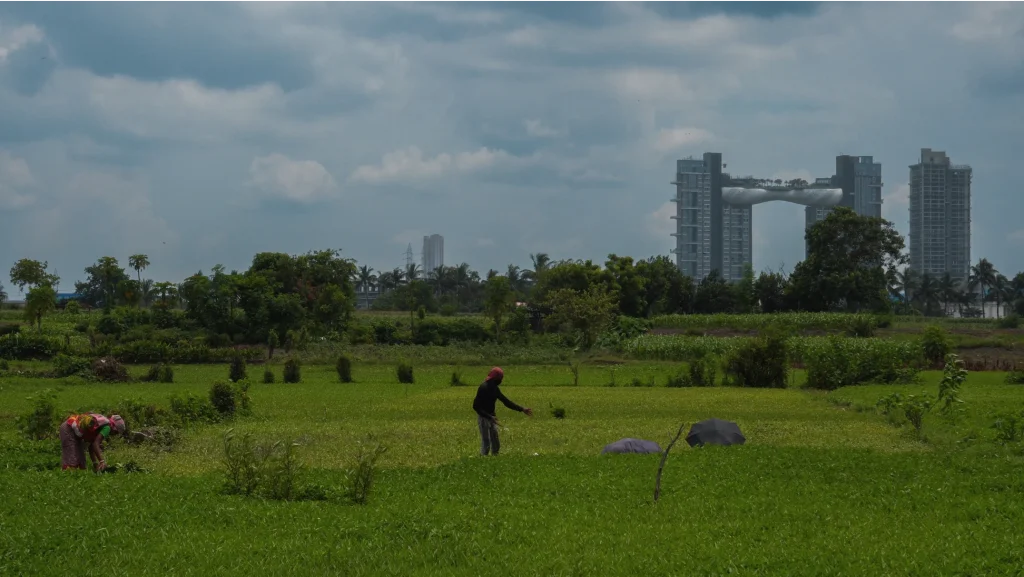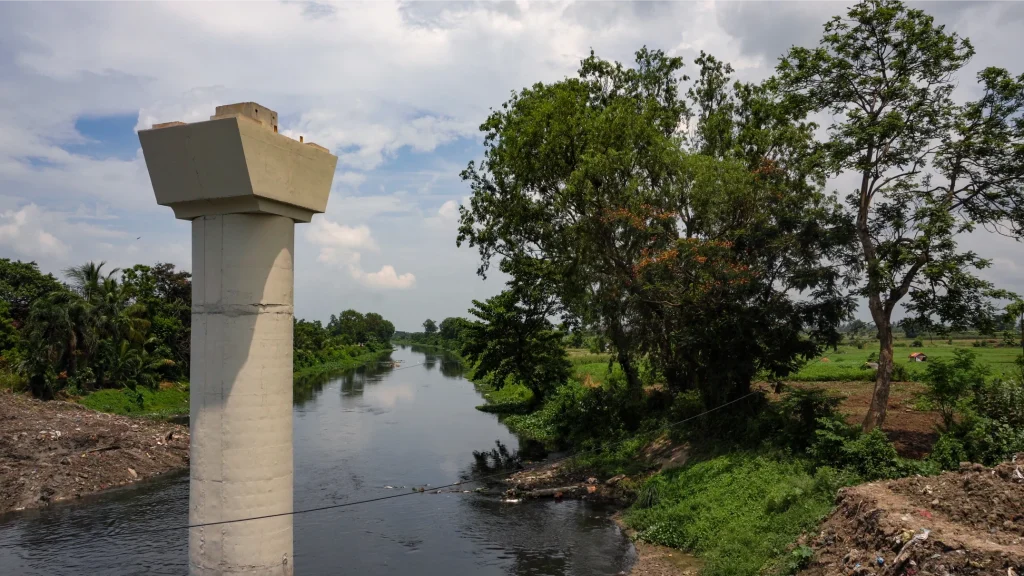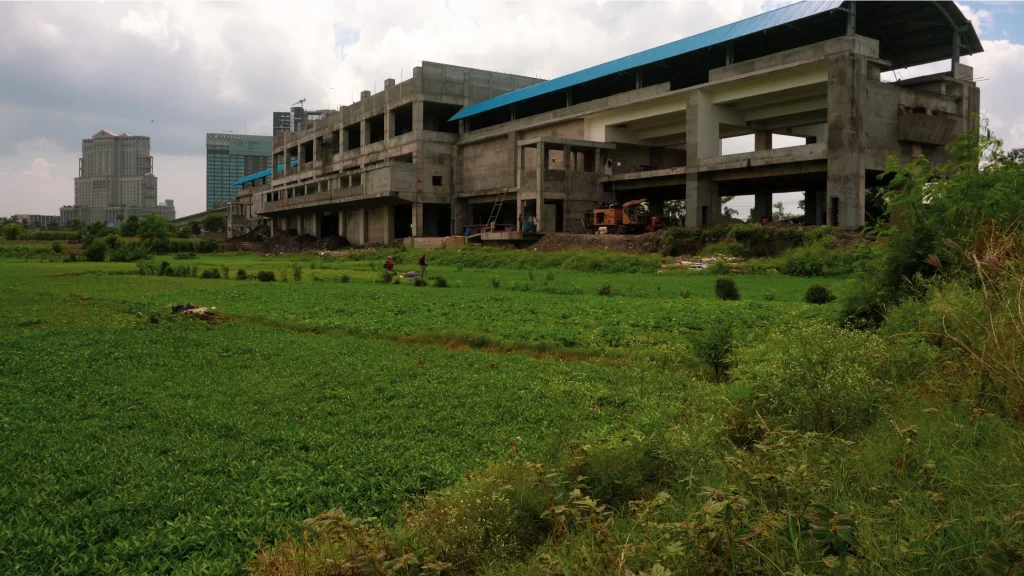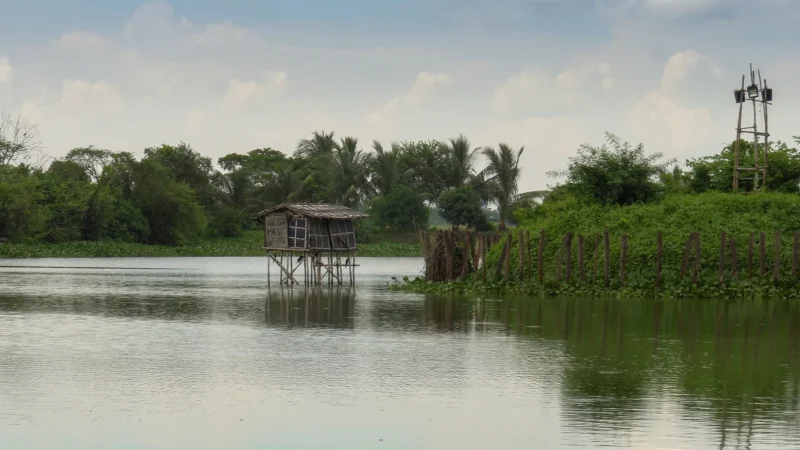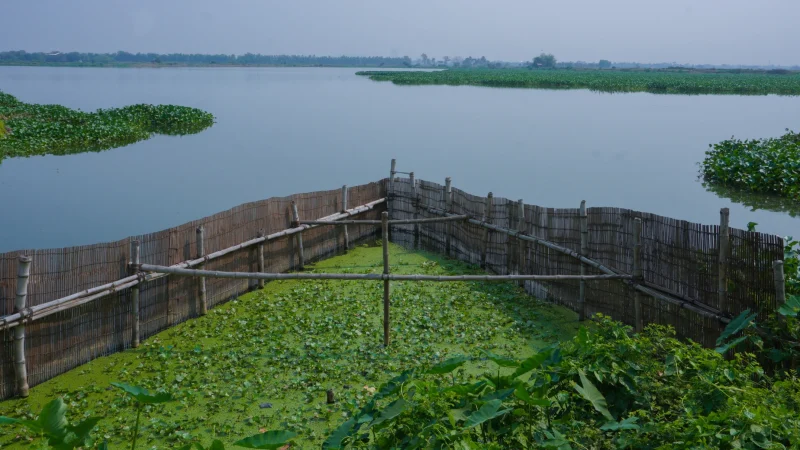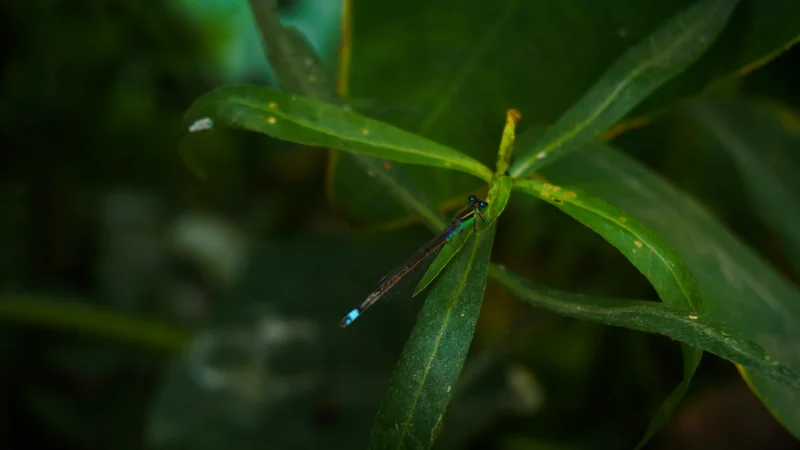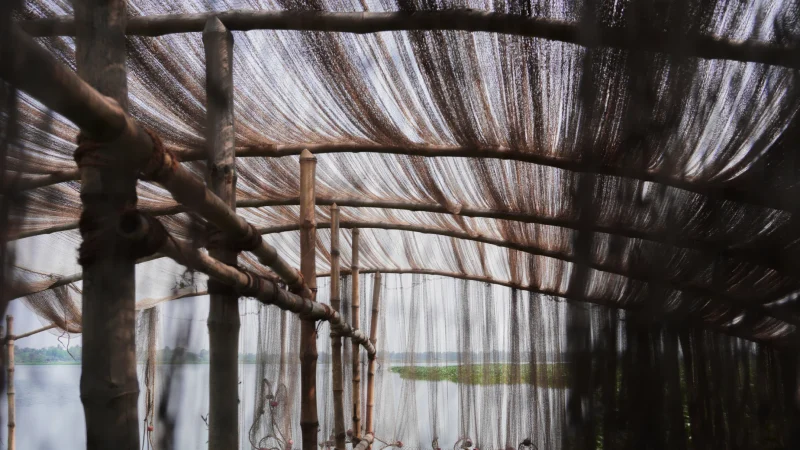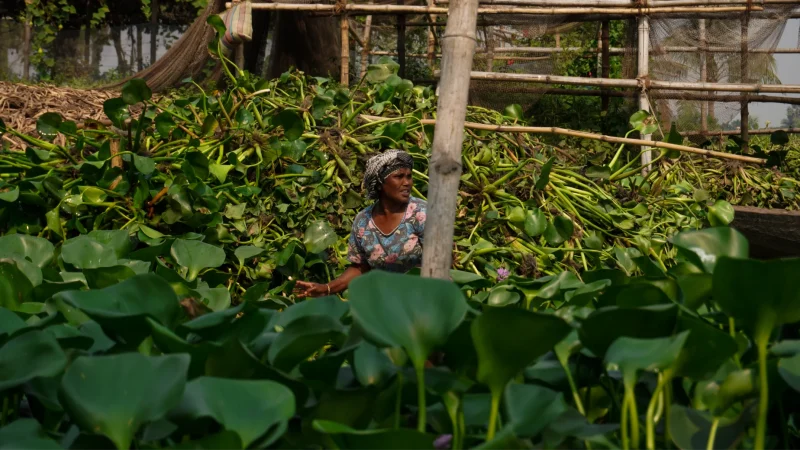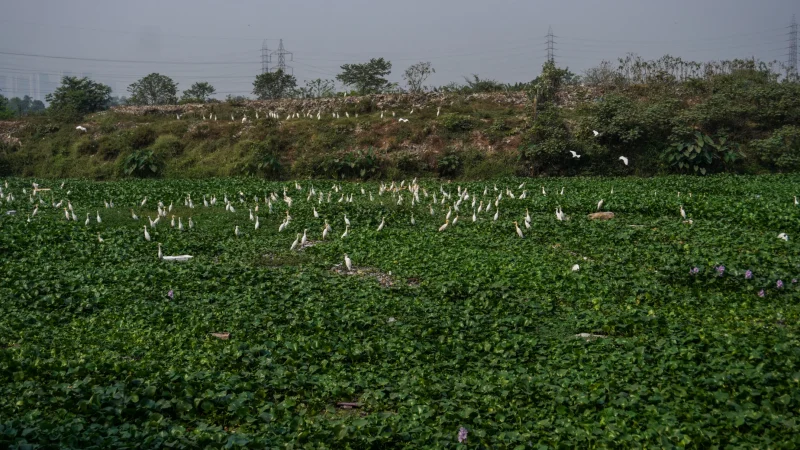The Space
“Accommodating the municipal solid waste dumpsite as well as paddy and vegetable fields, the East Kolkata Wetlands (EKW) is home to diverse species of flora and fauna that help moderate the temperature gradient, sequester carbon, and regulate monsoon flooding.”
Within the peri-urban ecotone (a region of transition between two habitats) in rapidly urbanizing Kolkata, sits the East Kolkata Wetlands (EKW) that accommodates 254 sewage-fed water bodies interspersed with farmland. These wastewater ponds serve as a natural sewage treatment plant. Nearly eighty percent of the city’s effluents are treated in these ponds whose waters are used for cultivating a wide variety of fish. Local fisherfolk prepare the wastewater fisheries using natural methods like sunlight, algae, coliforms, and water hyacinth as the ponds receive pre-settled sewage from the Kolkata Metropolitan region. Interestingly, the EKW also hosts diverse species of flora and fauna that help moderate the city’s temperature gradient, sequester carbon, and regulate monsoon flooding.
An outstanding global example of sewage-fed aquaculture, EKW is distinguished by interactive management processes involving multiple actors whose knowledge and skill sets provide strong coordination to support resource recovery practices. However, rampant unauthorized construction and socio-political issues pose challenges, threatening the sustainability of this robust ecological infrastructure. This situation demands the development of inclusive discourse to address policies and practices, with active participation from concerned citizens and organizations to protect the EKW.
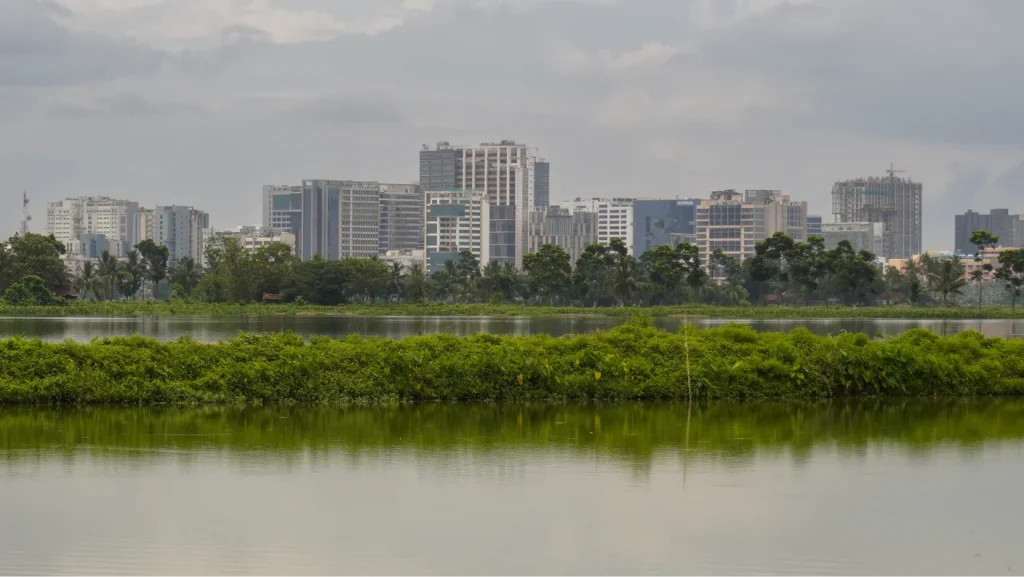
A Web of Wastewater Flow
A complex web-like series of wastewater canals connect the city to the wetlands. Constructed during the colonial regime, the canals served three main purposes of facilitating trade, navigation, and drainage. Six that served as the Eastern Canal System were excavated between 1810 and 1910. These historical conduits continue to carry wastewater from the ever-expanding city to feed the fishponds. There are stormwater and dry weather flow canals with the former being quite active during monsoons. Storm flow is discharged into the storm weather flow canal and the Kulti River during the rainy season when the city is prone to severe waterlogging.
Interconnected Canals Carrying Wastewater
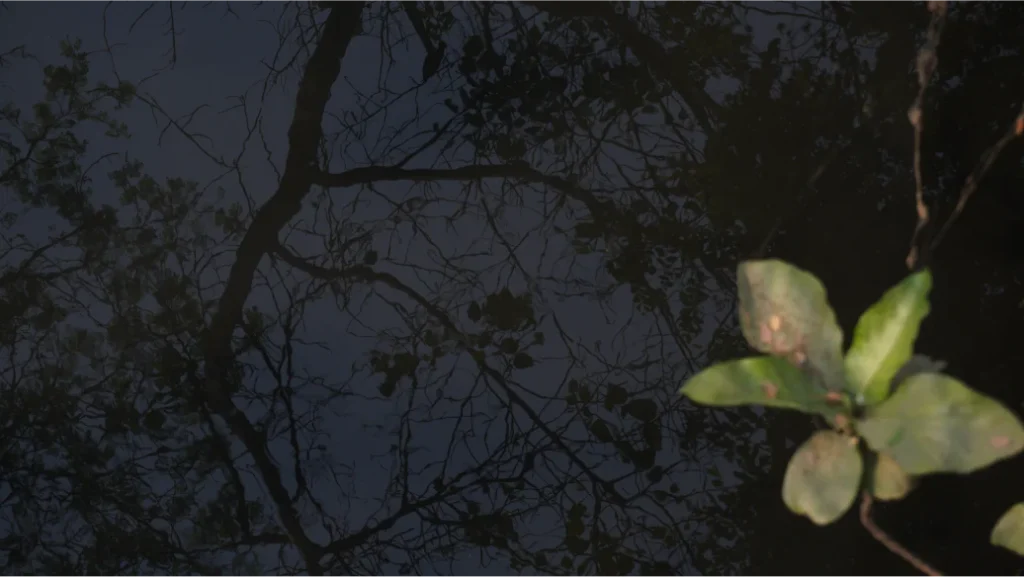
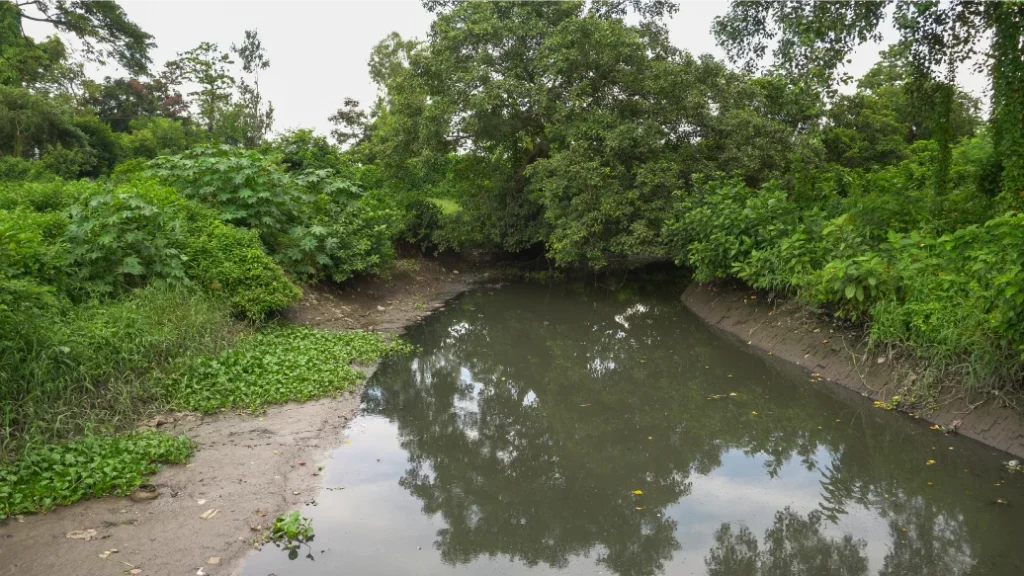


Wetlands Unlocked
Sluices, pumping stations, lock gates, and mortar sewers constitute an intricate network arrangement with a colonial footprint. This network required that multiple entities play equally important roles in managing the various processes and functions of the wetland system. An important step in the wastewater distribution system is the Bantala Lock Gate—a set of 10 sluice gates that are manually operated to distribute sewage using gravity to the fishponds through interconnected carrier channels.
The bheris or sewage-fed ponds pre-settled sewage from the dry weather flow canal through an intricate series of locally excavated secondary and tertiary channels. The numerous inlets that connect the main canal to the fishponds and cultivable plots, bring with them histories and stories of the earliest leaseholders who were encouraged to practice sewage-fed aquaculture and farming by the Calcutta Corporation during the late 1870s. Like smaller branches growing from the bigger ones, these crucial water trails circulate wastewater to the fishponds. Wastewater management processes ensure the time and amount of wastewater release as well as dredging of the inlets.
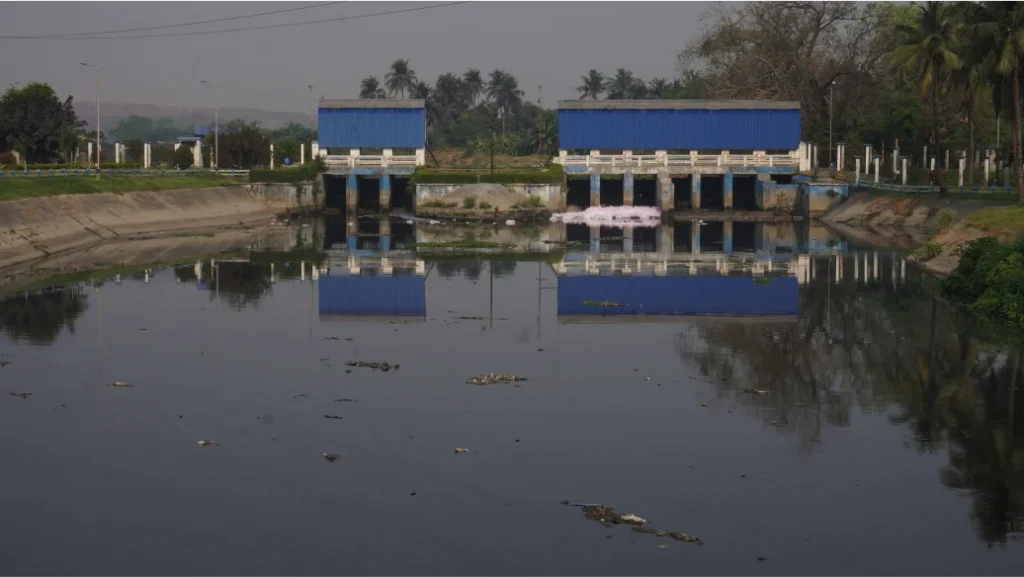
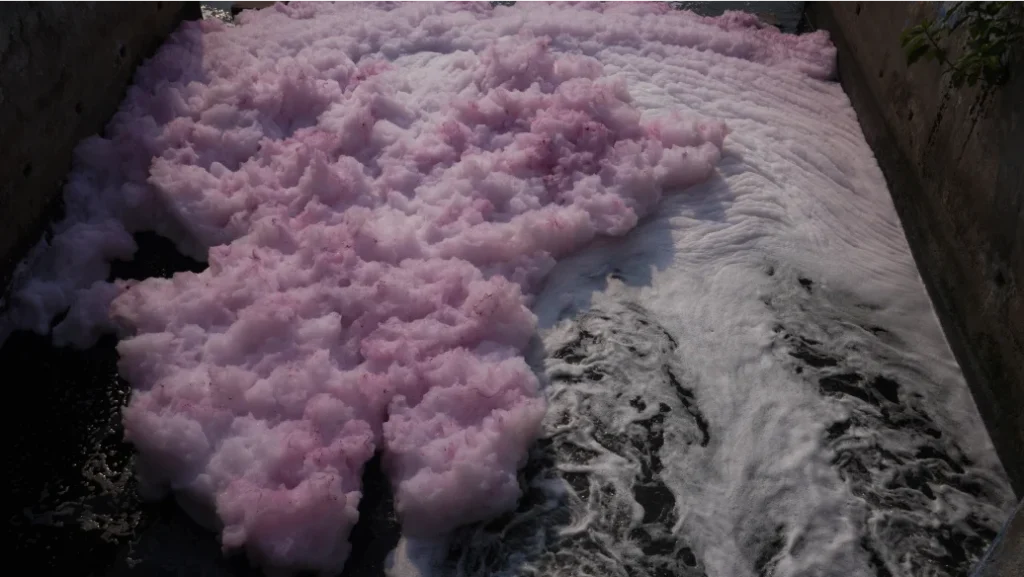
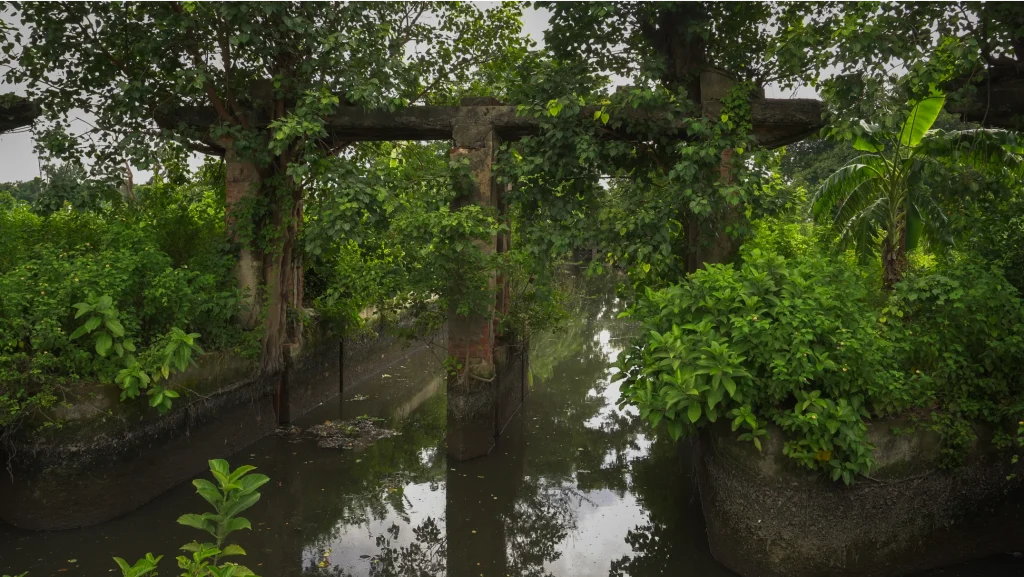
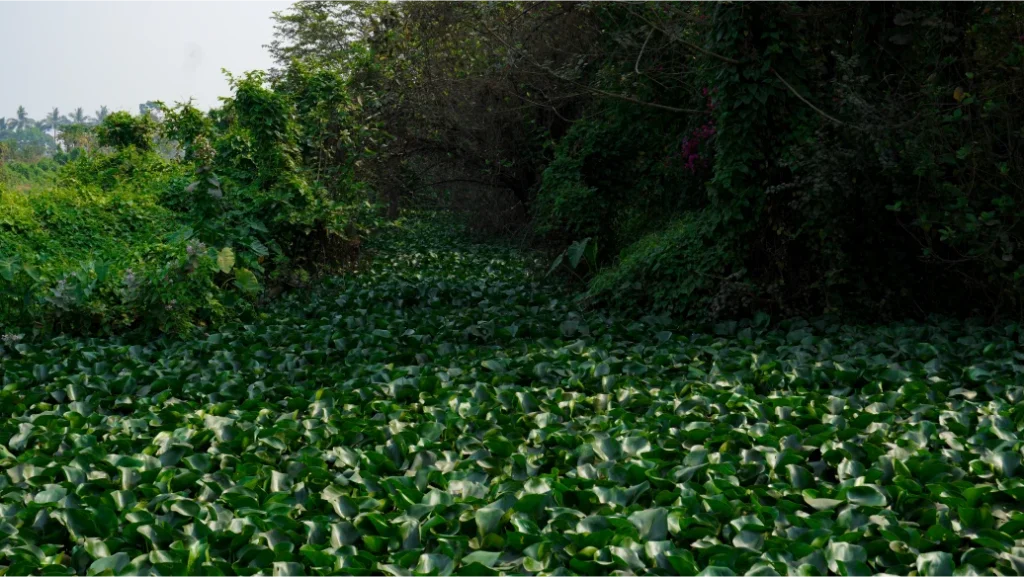
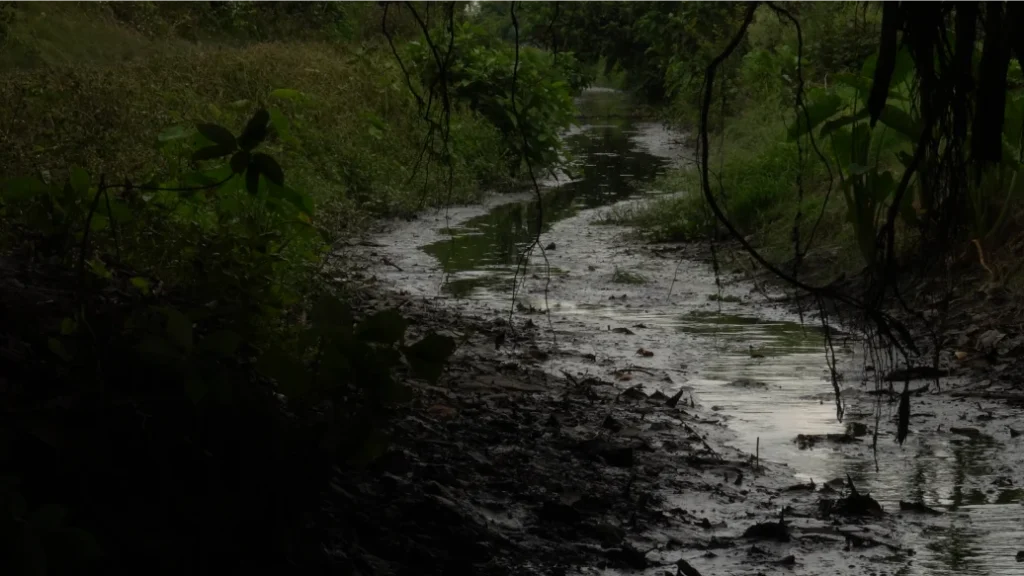
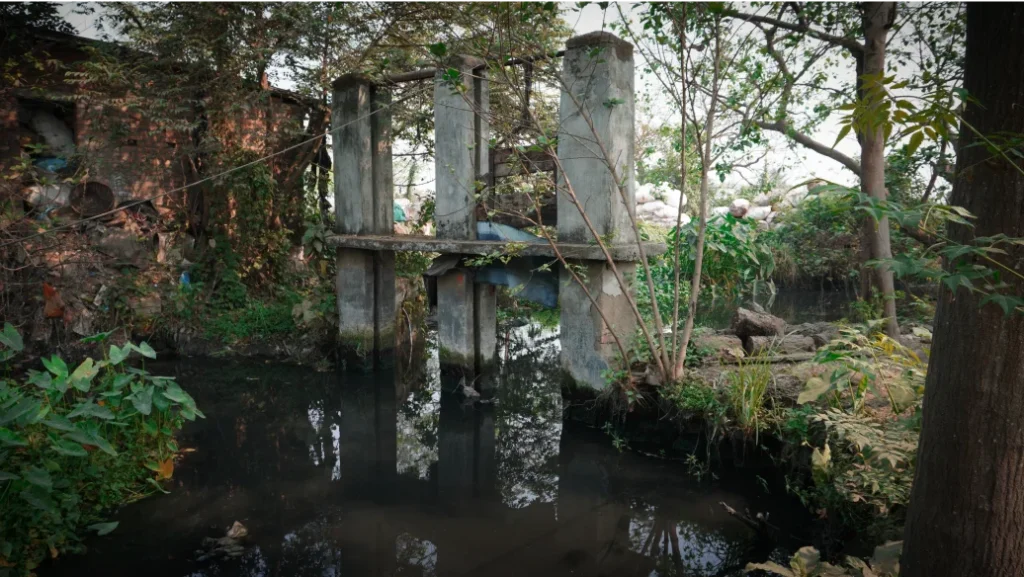
Multiplicities Unfolded
Wastewater and municipal solid waste are co-recycled in the EKW through traditional mechanisms and recovery practices followed by fisherfolk and farmers. There are three types of waste stabilization ponds (WSPs) currently functional in the EKW—anaerobic ponds, facultative ponds, and maturation ponds.
“In WSPs, natural sewage treatment involves five distinct phases: pond preparation, primary fertilization, fish stocking, secondary fertilization, and fish harvesting.”
In the WSPs, natural sewage treatment involves five distinct phases: pond preparation, primary fertilization, fish stocking, secondary fertilization, and fish harvesting.
Each phase begins with a meticulous and collaborative management of wastewater flow and distribution which then create the optimal conditions for pond preparation and aquaculture practices. In conjunction with coordinated technological operations, fisherfolk traditional knowledge, skillsets and wisdom have co-established the East Kolkata Wetlands.
Actors, Actants and Activities
Everything Flows
The fish cultivated in the wastewater not only help plankton thrive in the ponds, but also convert available nutrients into a consumable form. Solids removed are composted and used to fertilize the rice and vegetable fields of the neighborhood. This ecosystem-based livelihood practice enables the fishers and farmers to sell excess produce in the city’s markets. EKW’s role in the city’s social and ecological system is evident from the material flows between the two. The wetlands receive wastewater as a resource from the city which, in return, obtain fish from the wetlands, ensuring urban metabolism and sustainability.
“The wetlands receive wastewater as a resource from the city which, in return, obtains edible materials from the wetlands – an example of the inseparable ‘socio-nature’, rather than a perfect symbiosis.”
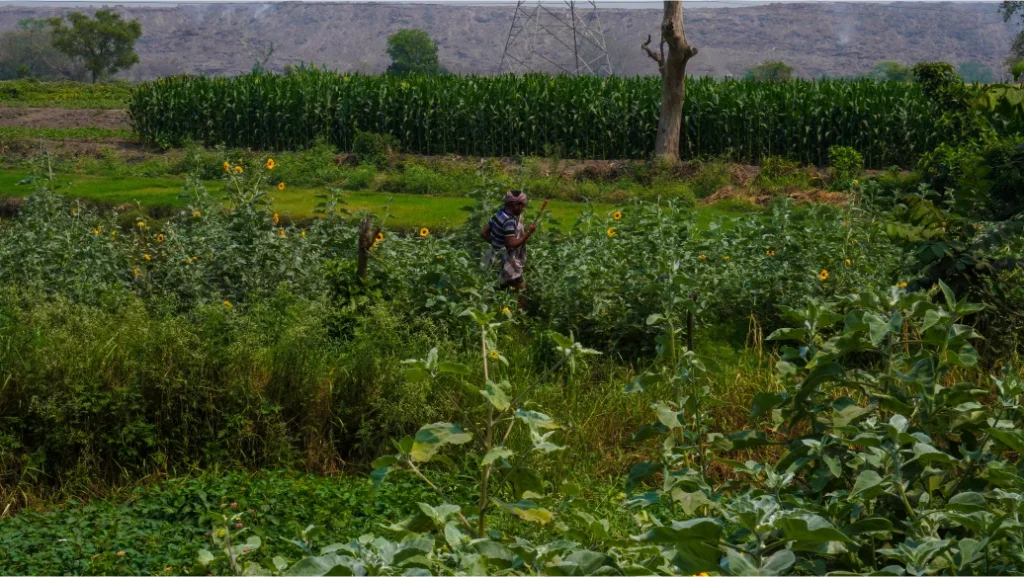
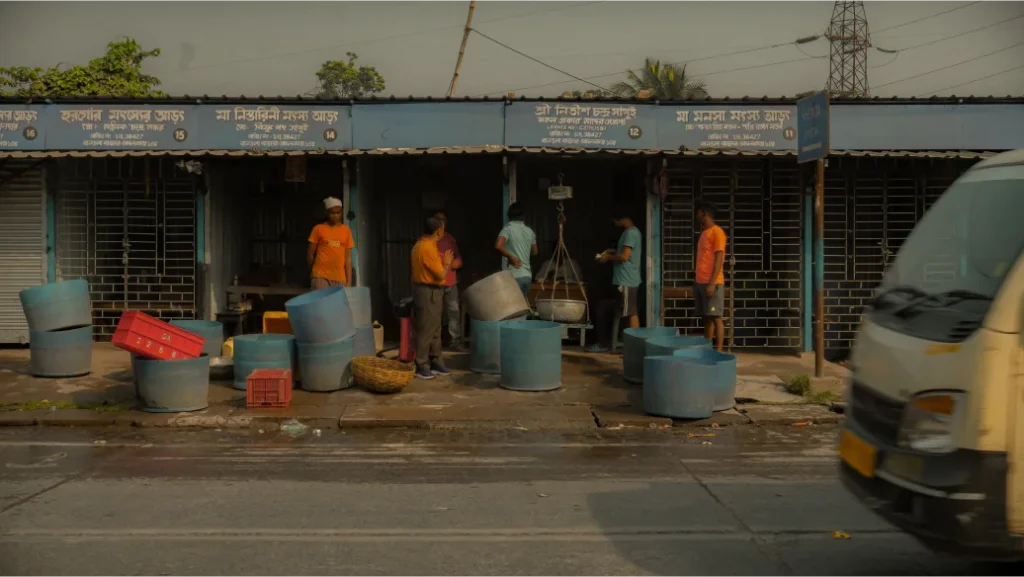
Chowbaga Fish Market
Changes and Challenges
This resource recovery system is challenged by innumerable stressors—from the wastewater channels’ siltation to growing urbanization that triggers real estate encroachments and conversion of wetlands. Unauthorized constructions, commercial ventures, and creation of new lands for the city by filling up waterbodies are commonplace. Social and economic insecurities shaped by exclusionary governance mechanisms and political equations are filling up this socioecological space with contestations and negotiations. It is imperative to develop a shared dialog among local stakeholders, academicians, civil society groups, grassroot activists, government agencies, and policy makers to ensure collaborative action to address the current sustainability challenges of the EKW.
Constructions around the East Kolkata Wetland region
